Good day! Adam here, and I’ve been eagerly anticipating this drive. It’s the Toyota Tundra, and while it’s been a familiar sight overseas, for us in Australia, this has been a long time coming. Toyota is painstakingly converting these to right-hand drive right here in Australia, ensuring they meet our market’s unique demands.
This particular vehicle has an interesting backstory, having undergone over a year of rigorous customer beta testing. Around 300 units participated in this program, allowing Toyota to refine the Tundra before its official launch. Now, it’s finally on sale, and today, we get to put it through its paces in a detailed review.
Price and Positioning: A Premium Proposition
The Toyota Tundra will set you back just over $155,000 AUD. This is a significant sum, especially when many of its competitors in the Australian segment start at much lower price points. The model we’re driving today is the Limited, which in the States is essentially the entry-level for the Tundra i-FORCE MAX range. This makes us wonder how its features and interior feel will stack up against recently updated rivals like the new Ram, which offers a robust package at a competitive price.
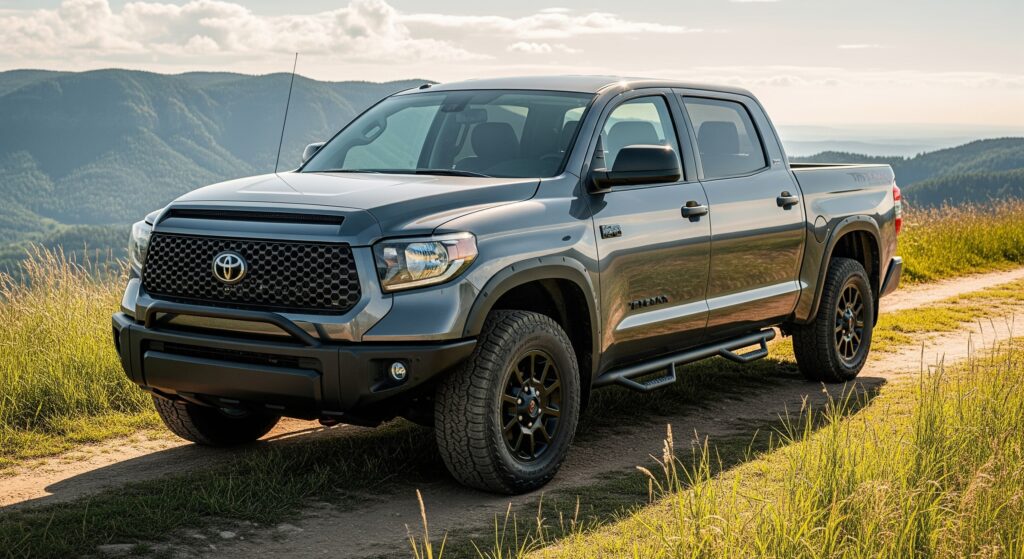
Design: Big and Bold, with a Few Quirks
From a design perspective, the Tundra certainly makes a statement. Its styling is subjective, of course, but I think it looks pretty cool.
- Front End: It features that enormous grille, synonymous with big pickup trucks, complemented by black highlights in the lower section. It boasts LED headlights with an auto high beam function and integrated arrow elements and indicators.
- Side Profile: Here’s where we hit a minor snag. There’s a decorative vent on the bonnet that, to my eye, looks a bit cheap and unnecessary. It’s not a functional vent, and it detracts slightly from the otherwise solid appearance.
- Wheels & Tires: The Tundra rides on 20-inch alloy wheels with a machined finish and graphite accents. These are fitted with highway terrain tires, which aren’t ideal for serious off-roading. For true off-road adventures, you’d definitely want to upgrade to all-terrains. The vehicle also seems to lack some of the dedicated off-roading equipment and drive modes found in its competitors.
- Side Steps: I appreciate the proper metallic side steps here, a welcome change from the plastic versions seen on some dual-cab utes.
- Visibility & Cameras: Indicators are built into the side mirrors, which also house cameras for the 360-degree view system. Chrome door handles and privacy glass complete the side profile.
- Rear End: Around the back, you’ll find LED tail lights. It’s a bit humorous to see “Toyota” in small letters across the tailgate, differing from the large “TOYOTA” badging we typically see on a Hilux. It carries a 4×4 badge and boasts a 4.5-tonne braked towing capacity.
Tray and Payload: Understanding the Numbers
The tailgate features a hydraulic release and can also be opened with the key. The bed liner is a bolted-in plastic type, not a spray-in, which some might prefer for its durability. It includes a sliding load management system, which is a nice touch, but lacks power outlets in the tray. This is a common challenge with converted pickup trucks in Australia, as adapting power requirements often involves significant R&D. Features like Ford’s Pro Power Onboard in the F-150 in the States offer a glimpse of what could be.
Let’s talk numbers:
- Payload: Just over 750 kg
- Gross Combined Mass (GCM): 7,825 kg
- Gross Vehicle Mass (GVM): Just over 3,500 kg
This means if you’re towing at the maximum 4.5-tonne capacity, you’ll have only around 300 kg of payload left. This isn’t a huge amount, especially once you account for a couple of passengers and some gear in the tray. For regular heavy towing, a GVM upgrade might be necessary.
Interior Impressions: A Mixed Bag
Stepping inside the Tundra, the key is a proximity-sensing unit with lock, unlock, tailgate, and panic buttons. The push-button start is conveniently located.
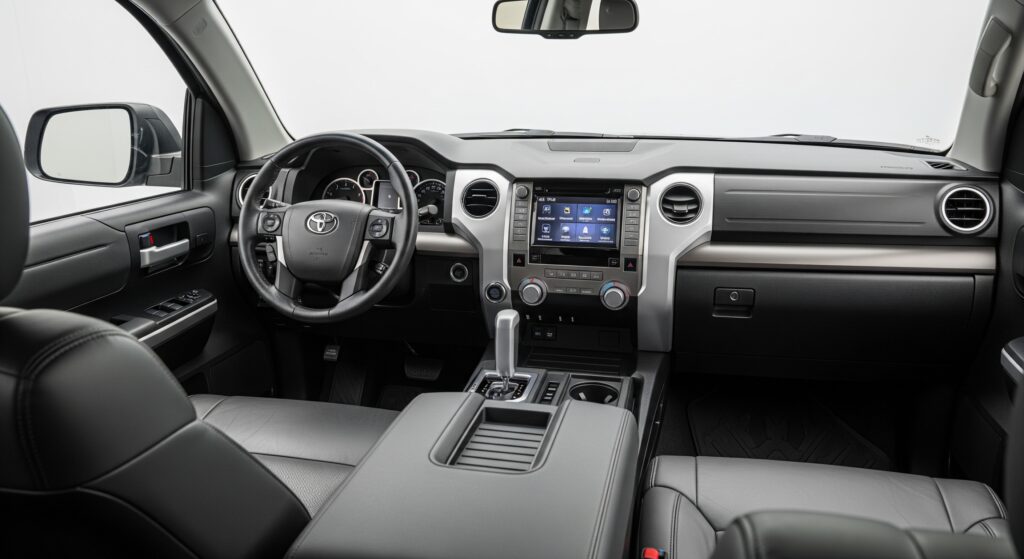
My immediate impression, having just driven the new Ram 1500 Hurricane in a similar Limited trim, is that the Tundra’s interior looks significantly cheaper. At this price point, I was hoping for something more premium. Some scratchy surfaces and piano black accents just don’t feel luxurious. In the States, where the conversion cost isn’t added, this pricing might be more realistic.
Despite some material choices, the main touch points in the center stack and door trims actually feel quite nice. We’ve even tested the softness of the main cabin surfaces with our durometer, and you can find comparison data via a link in the description.
Build quality from the conversion perspective seems top-notch. These vehicles arrive as left-hand drive and are converted in Australia. Honestly, I can’t tell any difference; everything looks and feels factory-fitted, which is commendable.
Infotainment and Driver Displays: Big Screen, Small Grievances
The Tundra features a massive 14-inch infotainment display, reminiscent of Lexus systems. A key difference for the Australian market is the lack of built-in satellite navigation. You’ll need to rely on your phone for navigation via wireless Apple CarPlay or Android Auto, which offers full-screen integration.
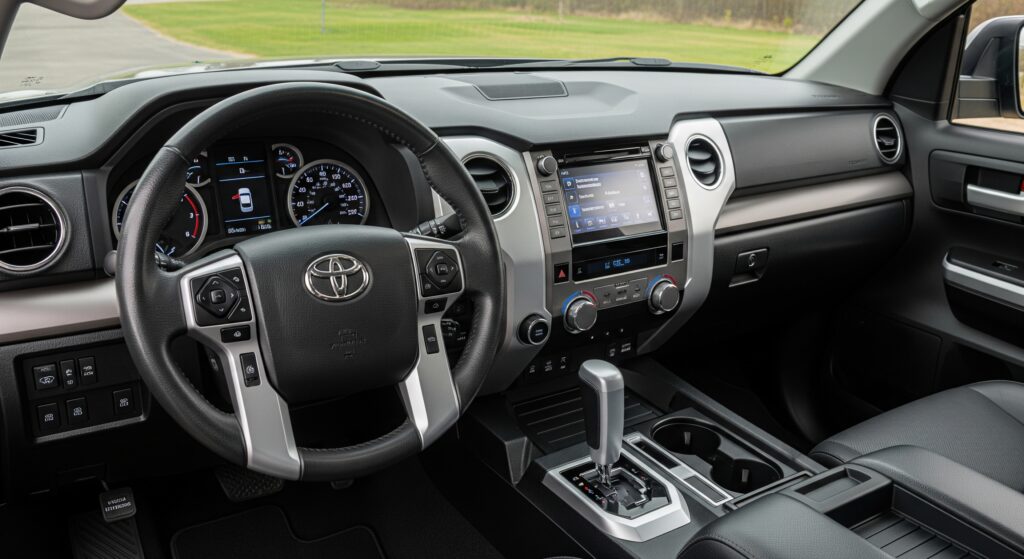
However, a couple of ergonomic issues stemming from the conversion are quite irritating:
- Volume Knob: The physical volume knob is placed too far to the passenger side, requiring a reach that feels unnatural for a right-hand drive vehicle. While steering wheel controls exist, quick adjustments become a stretch.
- Touchscreen Reach: Similarly, accessing controls on the far-left side of the large touchscreen (like entering addresses) is awkward and requires leaning across the cabin. This oversight during the conversion process is disappointing, especially given the extensive beta testing.
- Climate Control Sync: The most frustrating issue is the dual-zone climate control sync. You can only sync the driver’s temperature to the passenger’s side, not the other way around, meaning adjustments from the driver’s side don’t automatically mirror.
On the positive side, the JBL branded 12-speaker sound system is fantastic, delivering great audio quality.
Ahead of the driver, a 12.3-inch digital display offers a good level of customizability, allowing you to flick through various menus and data. The digital rearview mirror is a very handy feature, especially if you have a canopy or cargo in the tray. Front and rear parking sensors and a 360-degree camera system are also present. The camera quality isn’t the best, but it’s functional. I particularly love the “bed view” camera, which lets you see what’s happening in the tray.
Practicality & Comfort: Hits and Misses
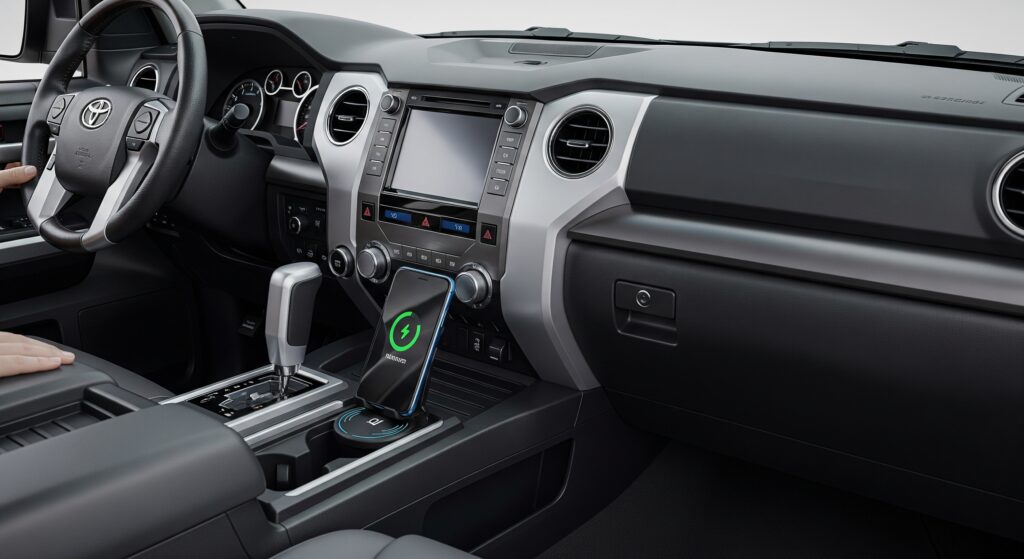
- Connectivity: You get a Qi wireless phone charger, though it lacks a clasp found in some rivals, meaning your phone might bounce around during off-road driving. There’s a single USB-A port up front, and then USB-C and USB-A ports in the center console, along with a 12V outlet.
- Storage: Storage is decent, with a sliding center console cover and reasonably sized glove box. A standout feature is the power-operated rear window that fully retracts into the body, a really cool touch that’s uncommon in this segment.
- Comfort: The seats are quite comfortable and offer heating and cooling. You get dual-zone automatic climate control up front. Seat adjustments are electric, with comprehensive control including lumbar adjustment and seat memory for both driver and passenger.
- Steering Adjustment: The steering wheel offers both tilt and reach adjustment, but the mechanism for adjusting it is “super grindy” and stiff, requiring significant effort. This is something Toyota needs to address.
- Second Row: While there’s heaps of legroom, knee room, and headroom, storage under the rear seats is absent due to the hybrid battery. Similarly, there’s no storage behind the seats, save for a jack and a towing kit. The floor isn’t flat like in some other American pickups, featuring a slight hump. Rear passengers get two USB outlets (A and C) and air vents on the side (though none on the flanks). The rear windows are auto up/down and go all the way down, which is excellent.
Driving Experience: Power and Puzzles
Hitting the road in the Tundra reveals its hybrid powertrain. It operates similarly to other Toyota hybrids, combining an internal combustion engine with an electric assistant, allowing for engine-off coasting and low-speed electric driving. When you apply mild throttle, it uses reserve battery energy.
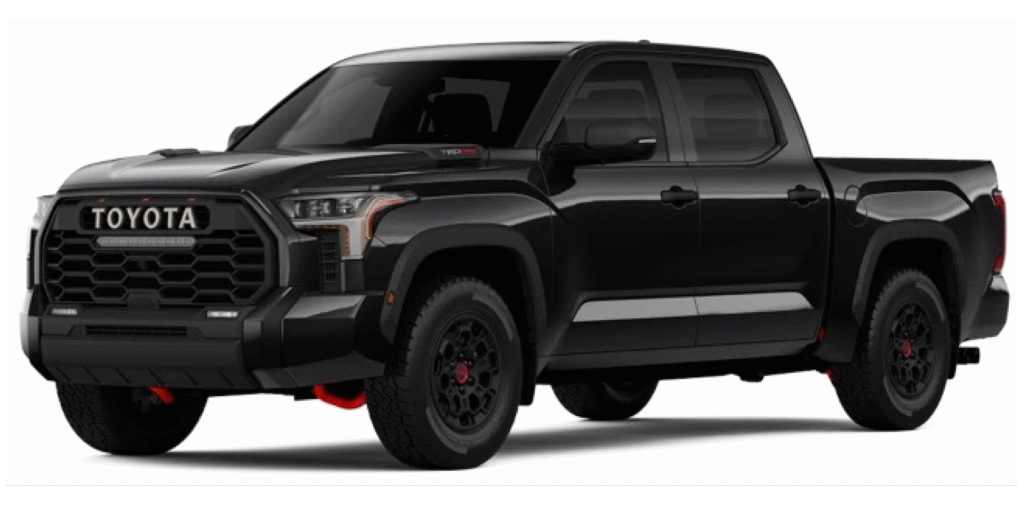
Unlike other Toyota hybrids, which use a continuously variable transmission (CVT) through motor-generators, the Tundra employs a 10-speed automatic hybrid transmission. This means you will feel gear shifts even in hybrid mode, though they are generally smooth.
Under the bonnet lies a meaty 3.4-liter turbocharged V6 petrol engine, producing almost 300 kW of power and around 650 Nm of torque on its own. Combined with the electric drivetrain, the total power output exceeds 300 kW, making it an absolute powerhouse that delivers a strong shove when you put your foot down. You can even hear the turbo spooling, which is a neat detail. There’s also what sounds like fake induction noise pumped into the cabin, giving it a gruff V8-like tone. Interestingly, the engine-off noise heard outside the cabin is projected externally for pedestrian awareness.
Fuel Economy & Ride Quality: Room for Improvement
Fuel economy for highway driving is quoted at 11 liters per 100 km. However, in our mixed driving, including drag race testing, we saw figures exceeding 20 liters per 100 km, indicating it’s quite thirsty, even with hybridization.
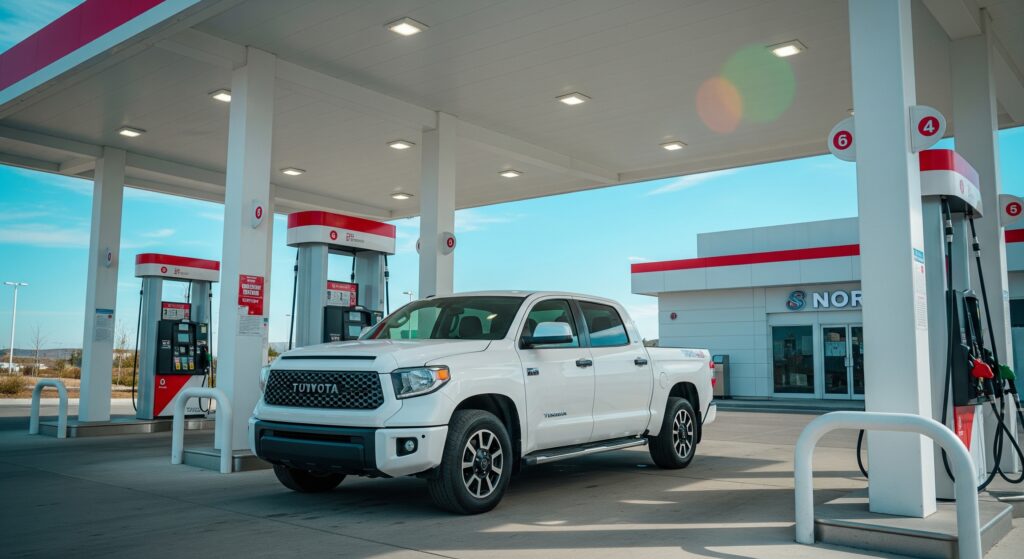
Now, for the ride quality, particularly on undulating country roads, the Tundra is exceptionally soft. I don’t believe any specific tuning has been done for the Australian market, as this softness leads to a “boat-like” wallow over consecutive bumps at speed. This is definitely an area that needs a bespoke Australian suspension tune to improve high-speed stability and comfort on our roads.
The Knocking Sound & Steering Issue: Beta Testing Oversights?
A concerning observation is a knocking sound, which we’ve experienced before in the 300 Series LandCruiser (which shares a version of this platform) and other Toyota products. It’s hard to pinpoint, but sounds like it’s coming from the front suspension, particularly over minor bumps. We captured audio of it, and it’s quite annoying. Given the year of customer evaluation, it’s staggering that this wasn’t picked up.
Regarding the stiff steering column adjustment, Toyota provided a response: they found the mechanism was “overtensioned,” and after inspection and adjustment, the condition was rectified. They’ve shared this with their technical teams for continuous improvement.
For the rattle/knocking sound, Toyota claimed it came from the spare wheel not being correctly secured. They couldn’t replicate the sound after securing it. While I’ll be curious to re-test this, it’s noteworthy that similar sounds have plagued other Toyota vehicles.
It’s concerning that a press vehicle, which is under extreme scrutiny, would present with such issues, especially after a year of beta testing designed to iron out these very problems. It raises questions about customer vehicles.
Drive Modes & Performance Testing: A Mixed Bag on Traction
Unlike many other dual-cab utes in Australia, the Tundra does not have a 4WD auto mode. This means you can only drive it in 2WD high range on sealed surfaces. Engaging 4WD high range on tarmac can cause drivetrain damage when turning, which is a bizarre limitation for a modern pickup. It does offer standard drive modes, including Sport.
The pickup is incredible in Sport mode; it really gets going nicely. The engine sound, despite likely being artificially enhanced, is quite cool in the cabin. However, that soft ride causes it to buck and wallow when hitting mid-corner bumps, leading to stability control overreacting.
Despite its 2,700 kg mass, the Tundra is fairly predictable in corners, though the lack of 4WD auto mode means less traction. Overall, the suspension could definitely use more tuning for Australian conditions, both for comfort on country roads and handling at higher speeds.
Performance Test Results:
We put the Tundra through its paces:
- 0-100 km/h (Traction Control OFF): 6.95 seconds. The powerful engine causes significant wheelspin off the line.
- 0-100 km/h (Traction Control ON): 7.04 seconds. Traction control bites hard, leading to a cleaner but slightly slower start. It’s frustrating that it lacks a 4WD auto mode to utilize its substantial torque efficiently without wheelspin.
- 80-120 km/h: 4.24 seconds. This is excellent, indicating strong mid-range power once it’s already moving.
- 100-0 km/h Braking: 42.97 meters in 3.04 seconds. For such a large vehicle, this is a decent stopping distance, though good performance typically sits between 35 and 40 meters.
- Reverse Speed (Traction Control OFF): 49 km/h.
Off-Roading Capability: Basic at Best
The Tundra’s off-road credentials are, frankly, rudimentary compared to competitors.
- Drivetrain: As mentioned, it’s 2WD high range on sealed surfaces. You get low range, but notably, there is no rear diff lock.
- Traction Control: The 2WD versions in the States come with an auto-LSD feature, mimicking a limited-slip differential, but this isn’t present here.
- Ground Clearance: 216 mm, which isn’t exceptional.
- Approach Angle: 23 degrees
- Departure Angle: 21 degrees
- Drive Modes: There are no specific off-road drive modes.
We attempted our offset mogul test in 2WD high range. Despite leaning on the throttle, the Tundra made no progress, with the traction control light flashing but failing to send torque effectively to the wheel with traction. Even with traction and stability control manually turned off, it simply spun the rear wheels. Most other dual-cab utes we test manage this obstacle in 2WD high range, demonstrating the effectiveness of their traction control systems. Without a 4WD auto mode, the Tundra struggles significantly in this basic off-road scenario. We will re-attempt this test in 4WD high range.
Final Verdict: A Powerful Contender with Australian Adaption Challenges
The Toyota Tundra is a powerhouse of a pickup, offering immense capability and impressive straight-line acceleration, even for its size. The conversion to right-hand drive in Australia has been executed to a high standard physically, but some glaring ergonomic and electronic oversights remain, which is puzzling given the extensive beta testing. The extremely soft suspension is a concern for Australian road conditions, and the limited off-road features make it less versatile than some rivals.
At its premium price point in Australia, the Tundra needs to offer a more polished and locally tuned package to truly compete effectively. While it delivers on power and comfort, areas like suspension tuning, interior ergonomics, and off-road capability present significant room for improvement.
What are your thoughts? Do you think the Tundra’s power and comfort outweigh its current shortcomings for the Australian market? Let us know in the comments below!
Your Part-Time Income: How Youth Buy Cars in the USA
Bentley Mulliner: Where American Automotive Dreams Take Flight